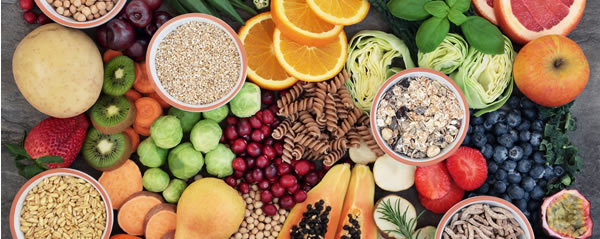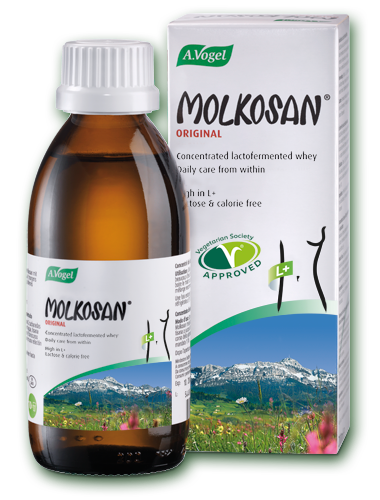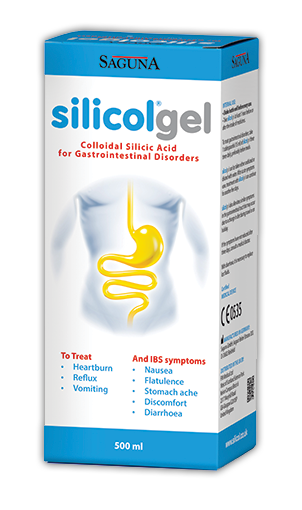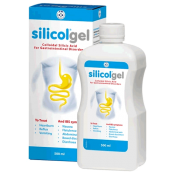Fibre – what you need to know
Fibre is an indigestible form of carbohydrate found in many fruit, vegetables and wholegrains. Many of us have heard of fibre and are aware we should be ‘upping our intake’. But why is it so important, what’s the truth about fibre and how we should be approaching this component of our diet going forward? Here I explain all!
1 - Fibre is found in many fresh (and tasty) foods
When people think of fibre they often think of bland, cardboard-like all-bran and are instantly put off, but did you know that fibre can be found in a vast array of fresh, nutrient-packed foods? Fresh fruits and vegetables, beans, peas, pulses, nuts, seeds and freshly baked wholegrain bread are all great sources of dietary fibre.
My top tip is not to opt for foods that say that they’re ‘high in fibre’ (this suggests they’re in a packet and most likely have been processed) but instead eat foods that are naturally high in fibre! This leads me nicely into point number 2:
2 - Wholefood sources are key
They key is to eat wholefoods rather than processed foods with their bold, often misleading, heath claims. Food should be food – simple. If foods are in packets or in bar or box-form, then they’ve most likely been processed and may have components added or removed. So actually, this isn’t as nature intended, and it’s most likely in a form your body won’t respond to so well. These ‘foods’ may well have been stripped of their natural fibre during processing and then have had it added back in later down the line – this just doesn’t sit well with me!
Aim to opt for your unprocessed, plant-based foods instead that are naturally rich in fibre, plus they’ll contain lots of other naturally occurring beneficial components such as healthy fats, vitamins and minerals too.

3 - There are two different types
People often aren’t quite sure what fibre actually is and how exactly are we expected to eat more if we aren’t quite sure what it includes?
Firstly, we have insoluble fibre. As the name suggests, insoluble fibre isn’t soluble in water and makes up the roughage or the indigestible component of different vegetables and wholegrains. As a result of this, insoluble fibre adds physical bulk to your stools and helps to keep things moving along throughout the digestive tract.
Next, there’s soluble fibre. Soluble fibre readily absorbs water – creating a gelatinous mixture when it’s consumed with sufficient liquids. Soluble fibre is found in foods such as oats, barley, nuts, seeds, beans, legumes and some fruit and vegetables.
For best effects, we preferably want a combination of both soluble and insoluble fibre in our diet, and especially when it comes to soluble fibre, you need to be consuming enough water for best effects.
4 - Fibre has a number of health benefits – not just good for your gut!
Fibre has long been recognised to help keep your gut moving, but in more recent years, the benefits of dietary fibre have become much more widespread – it seems that helping you go to the loo may not be the only benefit!
As well as helping to protect against constipation, fibre may also be able to help support weight management and protect against metabolic syndrome which is associated with a number of conditions including heart disease and diabetes1.
Interestingly, other types of carbs which work in a similar way to fibre have been given more attention recently, such as resistant starch. Resistant starch, much like fibre, isn’t broken down by the time it reaches the large intestine which is good news – it means it acts as a source of food for your friendly gut bacteria. Sources of this type of carb can be found in everyday foods such as pasta, rice or potatoes when they are cooled – interesting!
5 - So, on the subject of your gut – fibre it’s bacteria boosting
As well as helping your gut to move along nicely, dietary fibre also feeds all the good bacteria in your gut, in this way it acts as a prebiotic2. Prebiotics, like our very own Molkosan, help to support the internal environment of the gut and support the growth of the naturally occurring good bacteria that exist there.
In turn, fibre may have even more associated health benefits as we know that the balance of bacteria in your gut can help support everything from our metabolism to our mood3 – there’s more reason that one to get stocking up!
6 - You need to aim higher
The current government recommendations are for us to eat up to 30g of dietary fibre daily. However, right now it’s estimated that we aren’t quite hitting the mark, and hitting only around only 18g!
My guess is that this is because in the typical Western diet there are too many stodgy beige-coloured foods which have been tirelessly stripped of their fibre content.
If you aim to include wholefoods in every meal; opt for brown varieties of carbohydrates wherever possible and don’t forget about helpful snacks too (trying swapping out some sweet treats and caffeine fixes that can become customary at many tea breaks nowadays), then I’ll bet you’ll easily be able to up your intake!
7 - Keeping the skin on is a good tactic
When it comes to fruit and vegetables, keeping the skin on wherever possible can really help to boost the fibre content.
When roasting off popular root vegetables for example, keeping the skin on may be an option for you (super tasty and adds texture too), and then you have apple skins which are loaded with pectin – a helpful type of soluble fibre not to be scrimped on!
8 - Eating more veggies is half the battle
When recommended intakes of fibre are mentioned people often don’t know where to start – how should we be measuring our intake and what foods should be priority?
Although it’s now recommended that we eat up to 30g per day, it isn’t feasible that you’re able counting this gram for gram. If you were, it’s most likely you’d be reading the back of packs which suggests you are eating packaged and processed foods, which defeats the purpose! My advice is to up your intake of fruit and vegetables more generally.
You don’t necessarily have to be reliant on a grain-heavy, carb-rich diet to get your fibre fix, fill your plate half full with fruit and vegetables instead and you’ll be well on your way for a good dose of fibre! This means you’ll be hitting your 5 a day at least (any more may also be a bonus!) and you’ll most likely be hitting your fibre intake without having to count it up.
9 - Could fibre make things worse?
For certain individuals, for example for those that suffer from IBS, fibre may not be recommended – why? There is a bit of debate around this, but this is often dependent on your symptoms.
Generally, we know that fibre is recommended, and unless under the guidance of a healthcare practitioner you shouldn’t be cutting your intake. In many cases, especially if your gut is sluggish, fibre is likely to be helpful as it helps to keep things more regular.
However, in some cases of IBS, certain types of fibre can be problematic and following a low FODMAP regime may be recommended whilst the gut is healing. Refer to our FODMAP friendly foods to get an idea of some of the fibre-rich fruit, vegetables, legumes, nuts, seeds and grains which might be worth including.
Silicol® gel may be useful to include during this phase if your gut is feeling overly sensitive. Rich in Silicic acid, Silicol® Gel helps creates a protective barrier throughout the digestive system, gently coat the gut wall and supporting healing. Over time, you may find that you are able to tolerate fibre better again, although this is often dependent on your individual symptoms.
10 - The truth around fibre supplements and how to use them properly
If you suspect that you need more fibre what’s the best way to go about it? Are supplements the answer? Even for the hardiest of digestive systems, loading up on lots of extra fibre in supplement form could contribute to bloating and may even compromise your absorption of key nutrients, so there could be a thing as too much fibre!
My advice is to get the majority of your fibre from fresh food sources, and if your bowel needs a little extra support, a low dose supplement such as glucomannan, inulin or FOS in combination with plenty of water, could be a suitable option for you.
1. Zou J, Chassaing B and Singh V. Fiber-Mediated Nourishment of Gut Microbiota Protects against Diet-Induced Obesity by Restoring IL-22-Mediated Colonic Health. Cell Host & Microbe, 2018; 23 (1): 41 DOI: 10.1016/j.chom.2017.11.003
2. Gibson GR. Fibre and effects on probiotics (the prebioic concept). Clinical Nutrition Supplements, 2004, 1(2), (25-31).
3. Cryan JF and Dinan TG. Mind altering microorganisms: the impact of the gut microbiota on brain and behaviour. Nature Reviews Neuroscience, 2012, 13, (701-712)







 Looking for our products in a store near you?
Looking for our products in a store near you?


